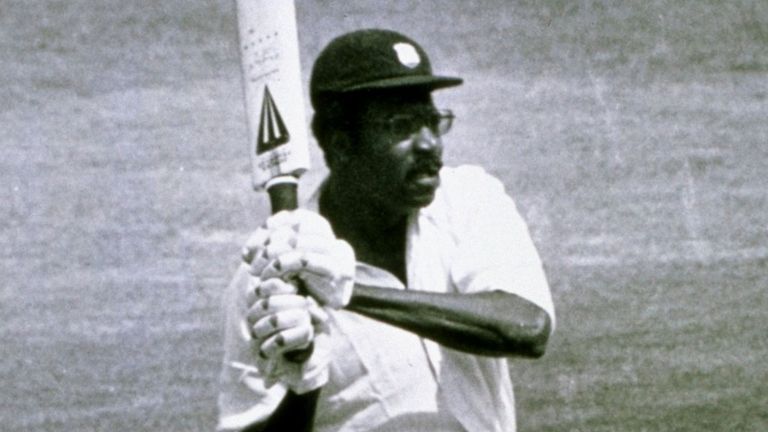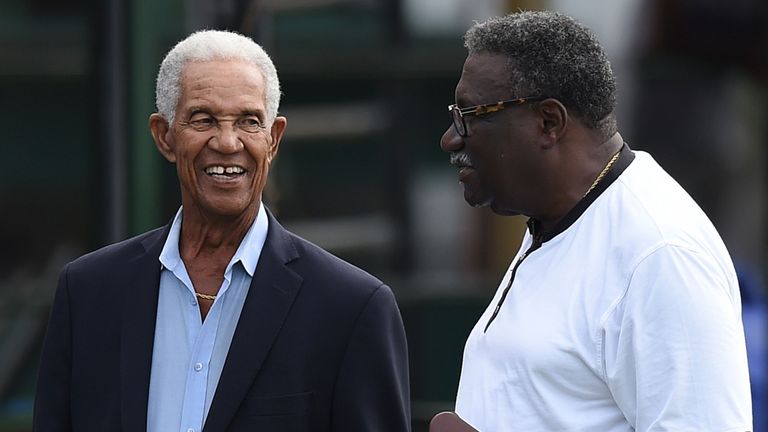My Cricketing Hero: Michael Atherton picks Sir Clive Lloyd
"His power was immense, the ball propelled away with brute force and his bat following through with such violence that it might hit his own backside. He was thrilling to watch."
Tuesday 12 May 2020 11:21, UK
Who did the Sky Sports Cricket pundits idolise growing up? Every Monday, we will be asking one of our experts for their cricketing hero and this week it's Ath's turn...
I know I didn't see the best of Clive Lloyd.
By the time I came to watch Lancashire regularly in the early to mid-1980s, he was a little more heavy-set than he had been in his prime and his time in the field was spent at first slip, rather than prowling at cover, which is how he originally came to get that nickname 'Super Cat.'
He was also a little more vulnerable at the start of his innings than he had been, his eyesight an impediment as the years advanced. Still, it was Lloyd and the West Indies team that captivated this young cricketer.
Lancashire was the connection, of course. Lloyd, like many West Indians before him, had to come to the county to play in the leagues - Haslingden in the Lancashire League, in his case.
He then joined Farokh Engineer as one of two overseas players who were central to Lancashire's domination of the early years of one-day cricket in this country. That team: Lloyd (D), Wood, Pilling, Hayes, Lloyd… it still rolls off the tongue as easily now as it did then and both Lloyd and Engineer became adopted Lancastrians. Both have lived in the county ever since.
I would attend the odd Sunday League match, in which Lloyd's destructiveness with the bat was a highlight. I can still remember him launching one hit out of the ground and into the railway station, which I haven't seen anybody do since, even in these days of destructive power hitting. His power was immense, the ball propelled away with brute force and his bat following through with such violence that it might hit his own backside. He was thrilling to watch.
He was also captain, of course, of the greatest team the game has seen, a compelling mixture of world-class and charismatic cricketers, knitted together by a man whose tactical insights on the field were probably outweighed by his management skills in bringing together a disparate bunch of players from many islands.
No doubt you didn't need to be Mike Brearley to win matches with that team, but the standards they set and maintained spoke volumes about their captain.
Two memories, really, book-ended my watching of cricket, before I began to play professionally.
The first was the World Cup final of 1975 at Lord's, the first of its kind, in which Lloyd was absolutely at his best, winning the man-of-the-match award for an innings still regarded as one of the great knocks in World Cup history. With West Indies tottering a little against Australia, Lloyd scored a memorable hundred, a trademark slight kick of his back-foot signalling when he was on the charge. This boy of seven years old was captivated.
The second, was the NatWest final of 1986, the last big occasion of Lloyd's career, when he was dismissed for a duck.
I remember the nervousness with which I watched that day, and the disappointment when he was dismissed cheaply, shuffling across his stumps and palpably leg-before. It was end of a great career, which meant that I missed playing with him for Lancashire by one year.
I've got to know him since, of course, but it would have nice to step out onto the field once, wearing the Red Rose together.






